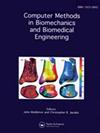结合抽样和机器学习算法,基于个性和人口特征的药物使用分类。
IF 1.6
4区 医学
Q3 COMPUTER SCIENCE, INTERDISCIPLINARY APPLICATIONS
Computer Methods in Biomechanics and Biomedical Engineering
Pub Date : 2025-07-23
DOI:10.1080/10255842.2025.2530648
引用次数: 0
摘要
药物使用源于生物、心理和社会因素。本研究根据个性和人口统计学将18种药物分类。预处理后,采用随机过采样、基于欧几里得范数的合成少数派过采样技术(SMOTEN)、基于欧几里得范数编辑近邻的合成少数派过采样技术(SMOTEENN)和7种机器学习(ML)模型(随机森林(RF)、极端梯度增强(XGBoost)、决策树(DT)、额外树、支持向量分类(SVC)、线性SVC和逻辑回归(LR))构建鲁棒、准确的药物分类预测模型。如案例研究所示,Random Over Sampler和Extra Trees提高了不平衡数据中的F1分数。本文章由计算机程序翻译,如有差异,请以英文原文为准。
Drug usage classification based on personality and demographic features using a combination of sampling and machine learning algorithms.
Drug use stems from biopsychosocial factors. This study classified 18 drug types using personality and demographics. After preprocessing, three sampling techniques Random Oversampling, Synthetic Minority Over-sampling Technique using Euclidean Norm (SMOTEN), Synthetic Minority Over-sampling Technique using Euclidean Norm - Edited Nearest Neighbors (SMOTEENN) and seven machine learning (ML) models Random Forest (RF), Extreme Gradient Boosting (XGBoost), Decision tree (DT), Extra Tree, Support Vector Classification (SVC), Linear SVC and Logistic Regression (LR) were applied to build a robust, accurate prediction model for drug classification. Random Over Sampler and Extra Trees improved F1 scores in unbalanced data, as shown in a case study.
求助全文
通过发布文献求助,成功后即可免费获取论文全文。
去求助
来源期刊
CiteScore
4.10
自引率
6.20%
发文量
179
审稿时长
4-8 weeks
期刊介绍:
The primary aims of Computer Methods in Biomechanics and Biomedical Engineering are to provide a means of communicating the advances being made in the areas of biomechanics and biomedical engineering and to stimulate interest in the continually emerging computer based technologies which are being applied in these multidisciplinary subjects. Computer Methods in Biomechanics and Biomedical Engineering will also provide a focus for the importance of integrating the disciplines of engineering with medical technology and clinical expertise. Such integration will have a major impact on health care in the future.

 求助内容:
求助内容: 应助结果提醒方式:
应助结果提醒方式:


